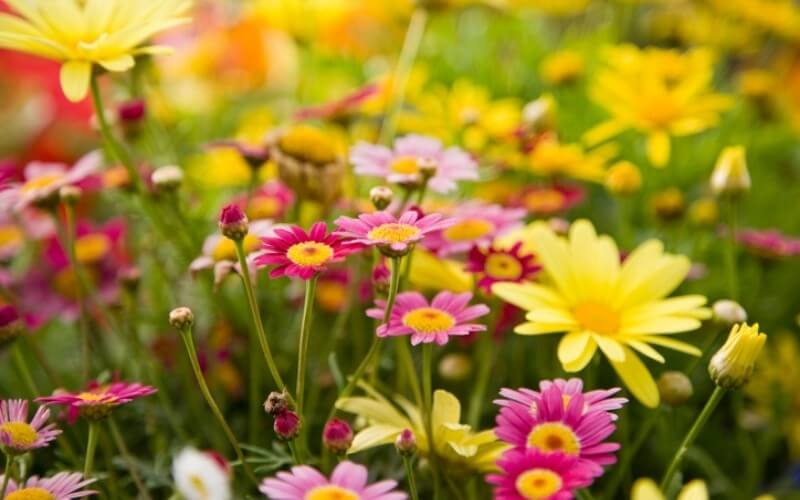
Daisies are some of the most recognizable flowers of all! They project innocence and a simple but disarming beauty.
They look great in informal gardens, borders, flower beds, wild prairies and cottage gardens. Children love them and adults become children when they see them.
And Nature seems to know this… In fact, she has given us so many flowers that look like daisies to make us (and bees and butterflies, ok…) happy!
The daisy shape of a flower is made up of a central disk and petals, or rays, around it. Flowers in the Asteraceae family have this shape, and they are proper daisies, like coneflowers and marigolds. Others have this shape but are not daisies, like ice plant.
In this article, we will not go by the botanical classification of daisies, but by the appearance of flowers with a daisy shape.
You will find pictures for each, but also a description and a guide on how to make the best of them in your garden and practical tips on how to grow them.
And among these, I am sure you will find many irresistible plants with daisy-like flowers!
20 Flowers That Resemble the Iconic Daisy-Like Blooms
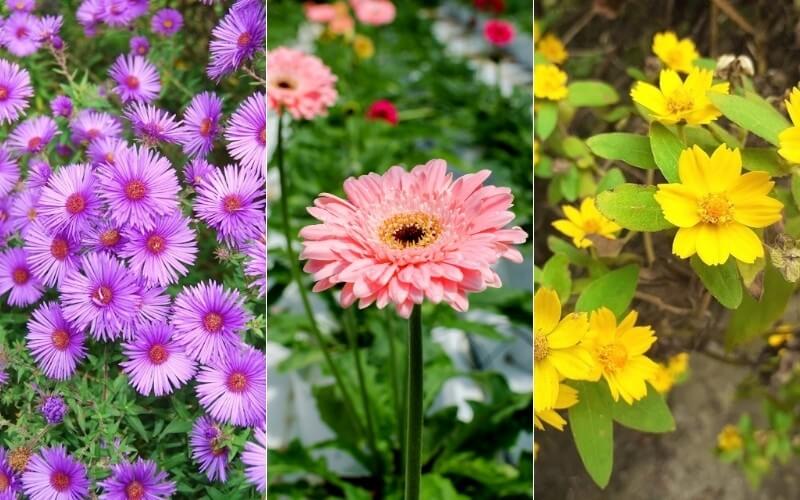
The basic shape of daisies is common among many flowers, and here are some of the original and most beautiful plants if you want daisy-like flowers in your garden.
1. Chocolate Daisy (Berlandiera Lyrata)
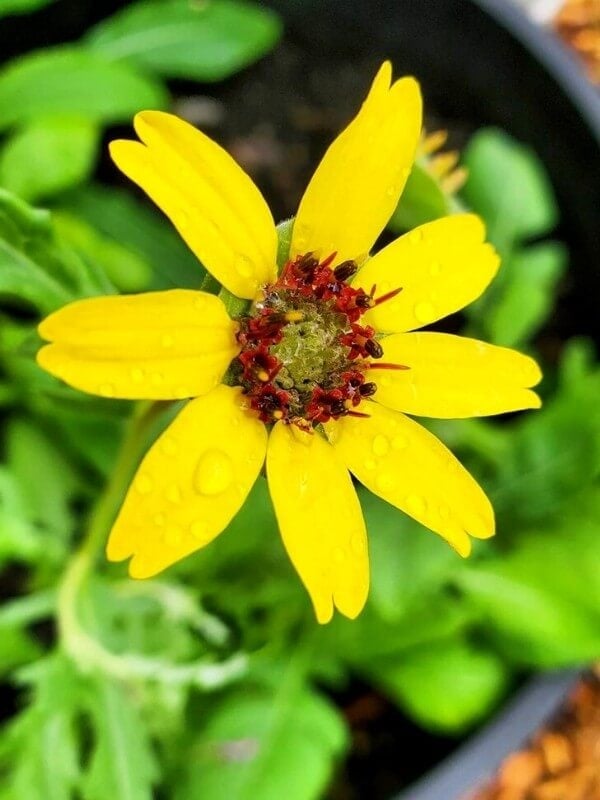
Let’s start with an original and unusual take on the daisy flower shape… Chocolate daisy has 8 ray like petals of the brightest and most vigorous yellow you can imagine.
The inner disk though has small flowers which are green when closed, but when they open, they are maroon red beauties of their own. Quite large and visible these flowers have a large yellow anther in the middle.
At the base of the rays there are two filaments of the same color as the disk flowers, maroon red, and the whole is framed by a disk of intersecting green leaves under the flower.
Chocolate daisy is also a great bloomer! It will start in late spring and keep going till fall. So, you will have a constant supply of Sun looking daisies in your borders, beds or wild prairies for months on end.
2. Tickseed (Coreopsis Verticillata)
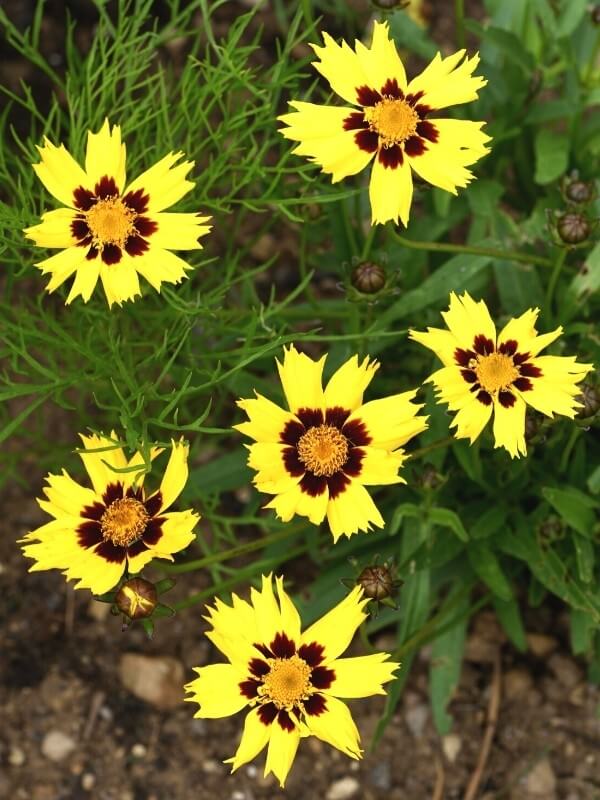
A hardy perennial which will fill with showy daisy like flowers is tickseed. This flower too has 8 ray petals, quite large and showy. The disk is usually of a closely matching color to the rays, and fairly small in size.
The many flowers of this plant come on long and thin stems in great abundance, making it perfect for borders in need of some color. They will keep blossoming all through the summer, and you have a good palette to choose from.
In fact, there are quite a few notable varieties, like ‘Sienna Sunset’, which has the warmest shade of apricot, ‘Moonlight’, with a delicate shade of lime yellow, or ‘Ruby Frost’, with rich ruby red petals with white margins.
3. Seaside Daisy (Erigeron Glaucus)
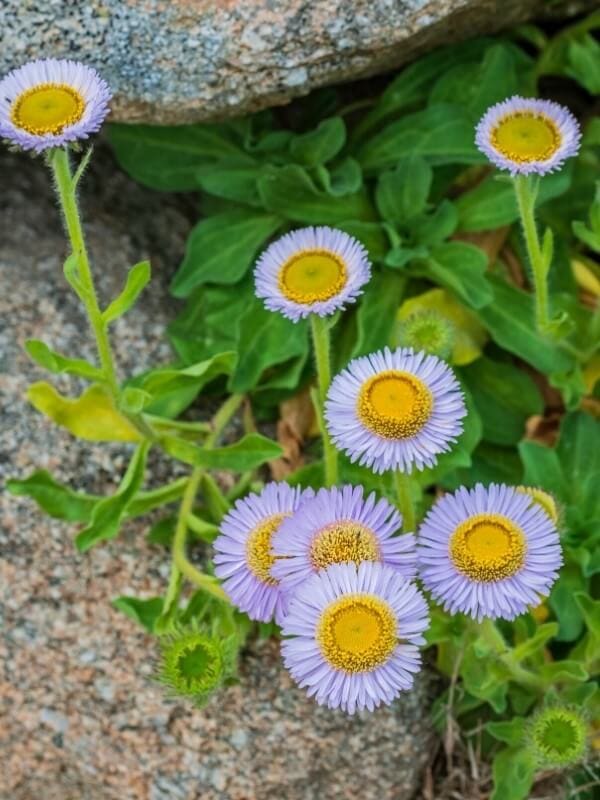
For a rock garden, especially on the seaside, for coastal gardens or to bring gravel gardens to life, few flowers match seaside daisy.
This short perennial will form small bushes of leathery green foliage that come to life from mid spring to late summer with many lavender pink flowers with yellow disks.
They have the typical many-petal daisy shape, but the color makes quite showy indeed, and the regularity of the rays brings to mind succulent flowers when they reflect the light.
This is a low maintenance plant that also attracts butterflies to your garden, and it will easily fit in pots and containers as well.
4. Blackfoot Daisy (Melampodium Leucanthum)
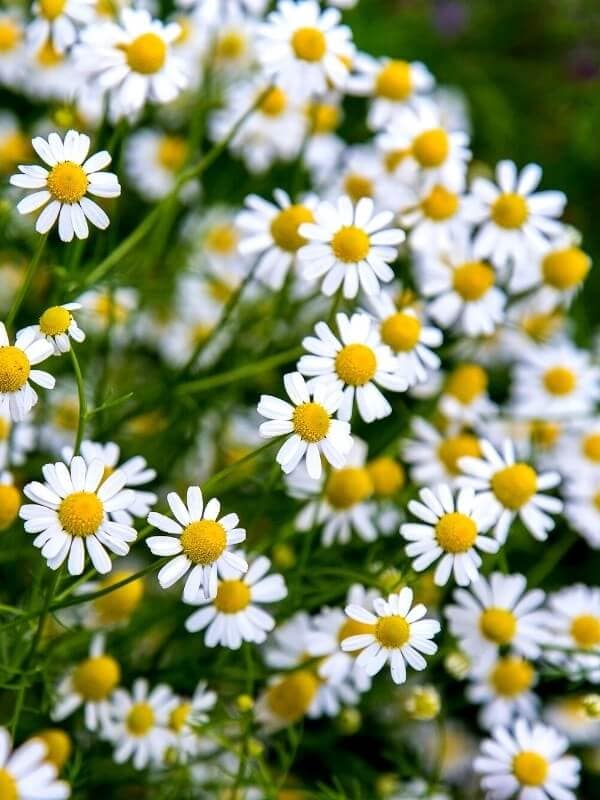
An excellent daisy for dry gardens, blackfoot daisy has become a favorite of xericscaping (or “dry gardening”).
This sturdy perennial with dark and fuzzy foliage and contrasting white flowers with a small, conical yellow center can bring the “classical daisy” look to any rock garden, gravel garden or prairie even where water is scarce.
The ray petals of blackfoot daisy are fairly large and particular, because they have a notch at the end, just in the middle, that gives them almost heart shaped tips.
Blackfoot daisy is also a very persistent bloomer. In fact, it will keep producing flowers from spring to fall. To their color, they will also add a very sweet fragrance.
5. Compass Plant (Silphium Laciniatum)
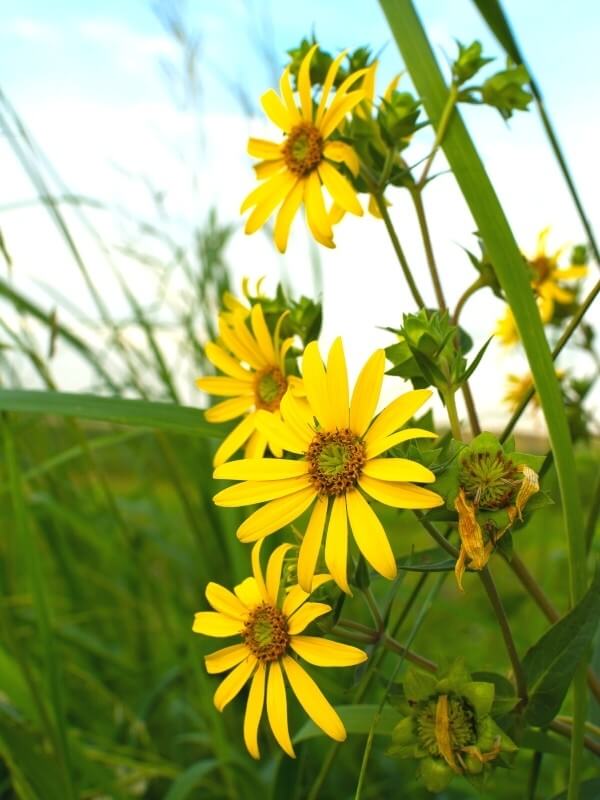
Daisies have the reputation of sweet looking flowers. But this is not always true. Compass plant for example has the wild, rebellious and unruly look that you may want in your borders or beds.
If in fact you want your garden to look natural and even harsh, this sturdy perennial has the perfect presence.
It looks more like wild chicory, (Cichorium intybus), with tall stems bearing alternate flowers high above a small shrub at the base.
The segmented leaves lower down the plant add to the look of the flowers which, though on a smaller size, reminds me of Van Gogh’s Sunflowers series.
Its petals, in fact, often twist and bend, as if to express pain and passion with their yellow energy.
Needless to say, it is perfect for a wild prairie or meadow too and easy to naturalize.
6. Painted Daisy (Tenacetum Coccineum)
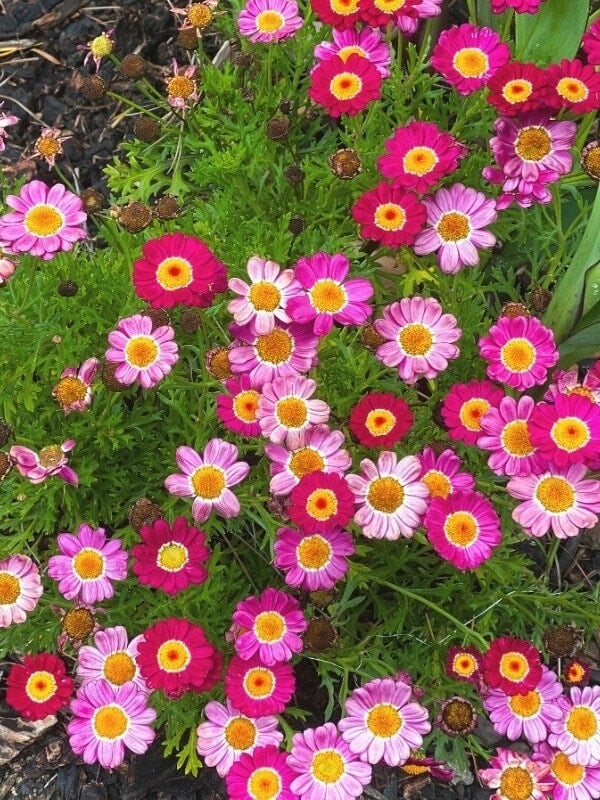
Then again daisies are not just “delicate” flowers… Some are strikingly bright and with a strong personality. Painted daisy is top of the list where vibrancy and energy are concerned.
In fact, it has petals with very strong shades of bright pink, red, purple or white. The central disk, which is yellow, adds contrast but also light to the almost surreal colors of the ray petals.
Maybe the most impressive shade is dark magenta with this flower; in fact, I could only describe it as “electric” or even “almost fluorescent”. It is ideal for loose sandy gardens, so, excellent for great colors borders by the sea…
7. Mexican Sunflower (Tithonia Rotundifolia)
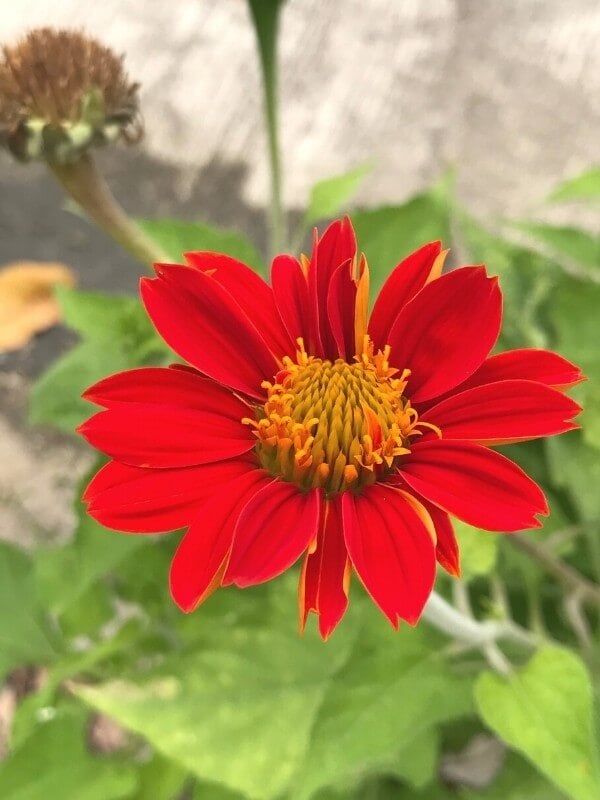
Mexican sunflower has large and showy deep orange flowers that can reach 3 inches across (7 cm) and have a golden disk in the middle. The petals are broad and threaded with slightly pointed tips that turn downwards as the flower matures.
The name of this flower is a promise: it will bring the warmth and vibrant light of Mexican summers to your beds and borders from summer to fall, but also butterflies and hummingbirds galore!
It is a fairly large plant with an important presence in your garden, so, this winner if the All American Selection in 2000 is better for large gardens and settings that can accommodate strong colors.
8. Butter Daisy (Verbesina Encelioides)
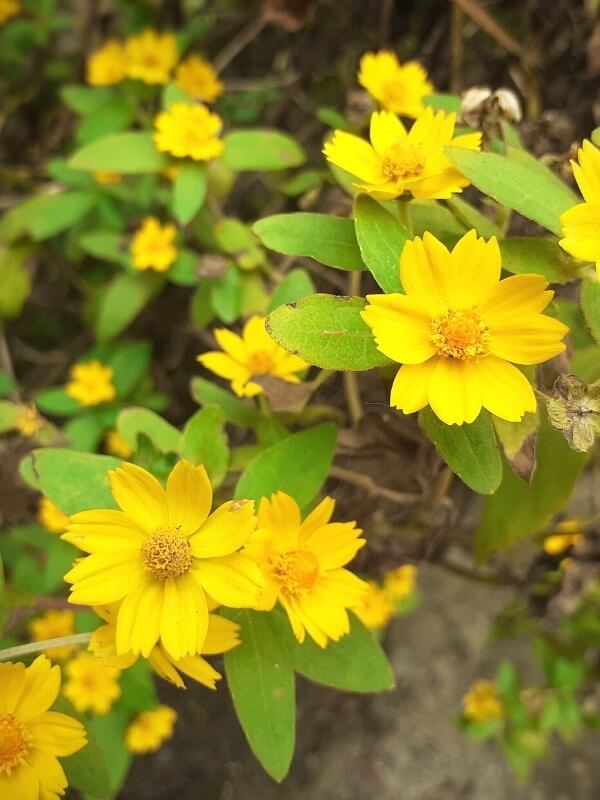
Do you want to play with delicate shades of color? Butter daisy is a very delicate flower which can have a sophisticated effect in your beds and borders. In fact, everything in this plant is subtle…
The leaves are of a pastel shade of aquamarine with silvery touches. The abundant flowers have pale butter yellow rays very thinly attached to a delicate banana yellow disk.
They look a bit like silk strips just barely connected to the center. Then, the petals widen and end in dented tips.
On the whole, the look like pale pastel yellow flames on top of a watercolor sea of large leaves.
Having said this, though, butter daisy is a strong and fast growing plant that will bloom from mid spring till the first frost!
9. Engelmann Daisy (Engelmannia Peristenia)
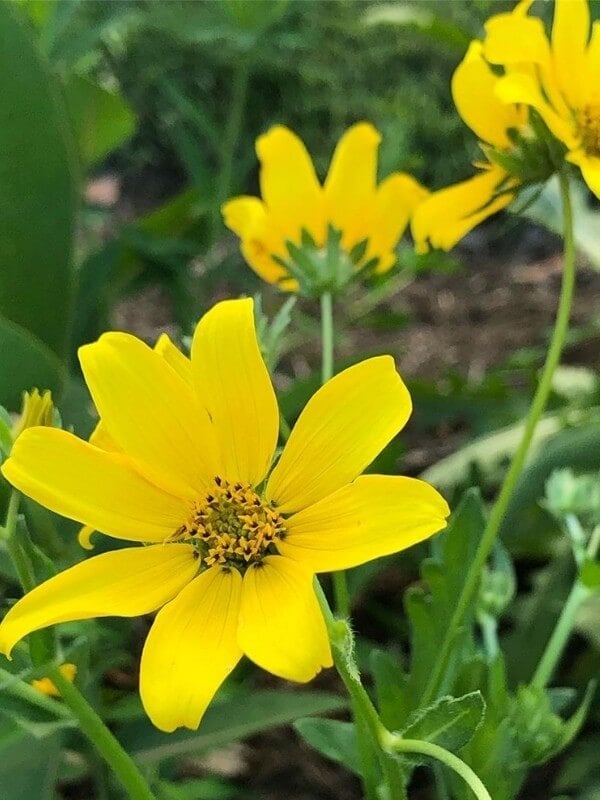
The delicate yet lively looking Engelmann daisy offers branched stems with several flowers on each and richly textured fuzzy foliage of segmented leaves.
The flowers of this perennial have small central disks, while the rays are large and the petals almost rhomboid in shape. This makes it both original as a daisy looking flower and elegant.
It is an excellent choice for a border that needs extra foliage as well as energetic bright flowers. Butterflies really love it and they will visit its flowers during all the blooming season, which runs from spring to the first frost!
This easy to grow flower is also drought resistant, which makes it perfect for xeric gardens.
10. Daisy Bush (Olearia X Scilloniensis)
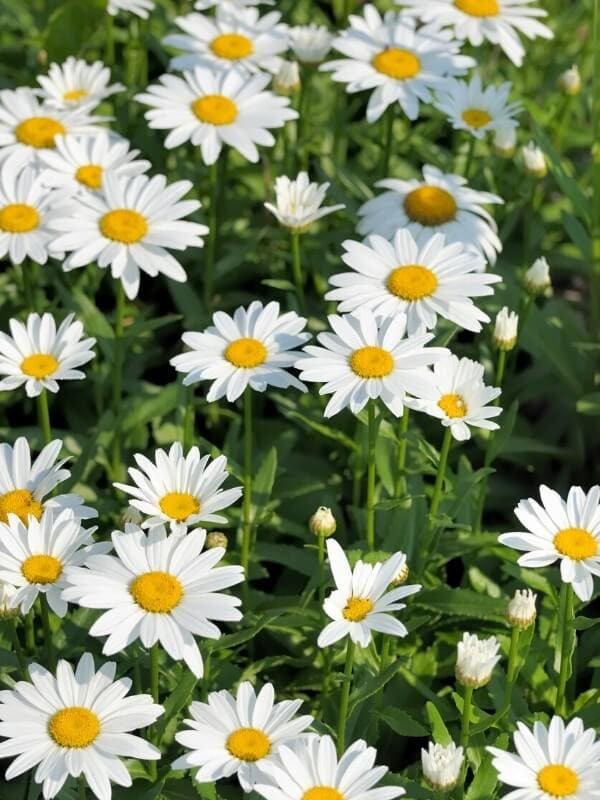
If you want to have a huge effect with a single daisy like plant, then daisy bush does what it says on the tin!
From late spring to early summer this shrub covers in a blanket of white flowers, so thick and dense that you will think it has snowed out of season!
The shrub itself has a compact and round habit and it is an evergreen, so, once the massive bloom has gone, you will be left with the beautiful foliage. This has a fine texture with small and bright green linear leaves.
This is yet another great choice to bring fresh foliage, stricture and flowers to coastal and seaside xeric gardens, in borders, hedges, as a wall side or as a standalone shrub.
11. Trailing Ice Plant (Lampranthus Spectabilis)
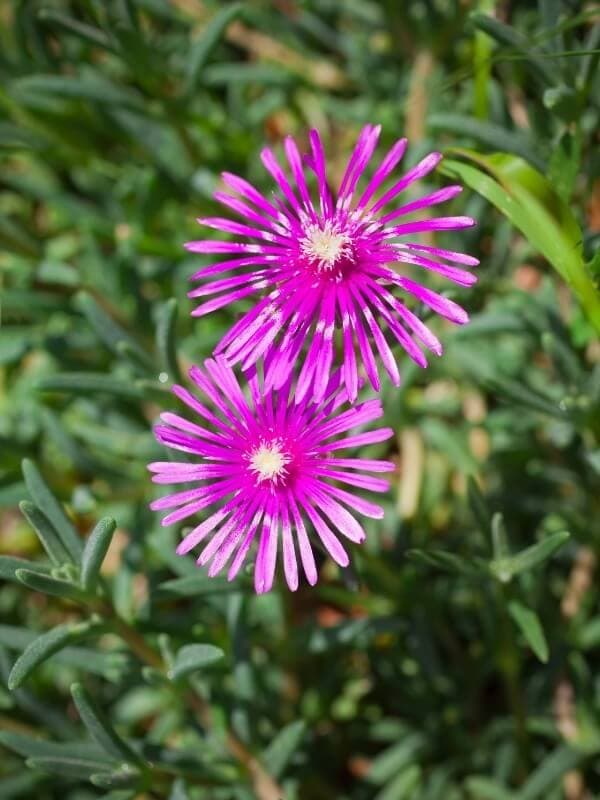
Not a daisy but very much daisy like, trailing ice plant is a flowering succulent with beautiful bright magenta flowers… and lots of them!
This beautiful evergreen with long and needle like or chalk stick like foliage will bust with amazing blossoms twice a year: once from winter to spring and again from late summer to early fall.
These flowers are showy and large (2 inches, or 5 cm, in diameter) and have the typical shiny quality of succulent flowers.
It is a beautiful sprawling plant which can enrich beds, borders, rock gardens and even wild prairies even in fairly harsh conditions, like coastal gardens and xeric gardens.
12. Leopard Plant ‘The Rocket’ (Ligularia Przewalskii ‘The Rocket’)
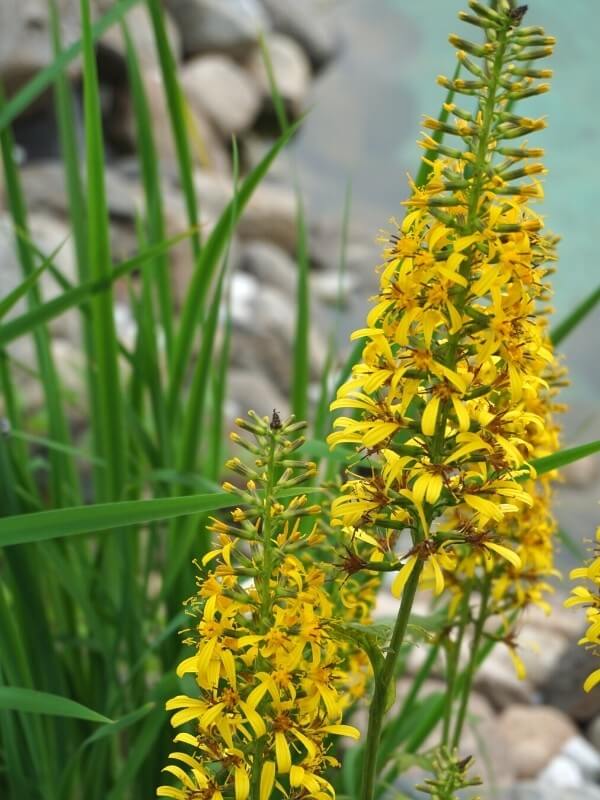
Another original take on the daisy flower shape by Mother Nature, the award winning leopard plant has long upright spikes with innumerable bright yellow flowers and large heart shaped leaves at the base. The flowers will come in summer on long dark stems.
This adds an architectural dimension to the shape of the plant that will allow you to introduce a proud and bold presence to your borders or beds, while still playing with the daisy shape of the flowers.
However, the place where leopard plants look best is next to ponds and streams.
While there are many wild varieties, the cultivar ‘The Rocket’ stands out for its elegant beauty and it has won the Award of Garden Merit by the Royal Horticultural Society.
13. Mexican Flame Vine (Senecio Confusus)
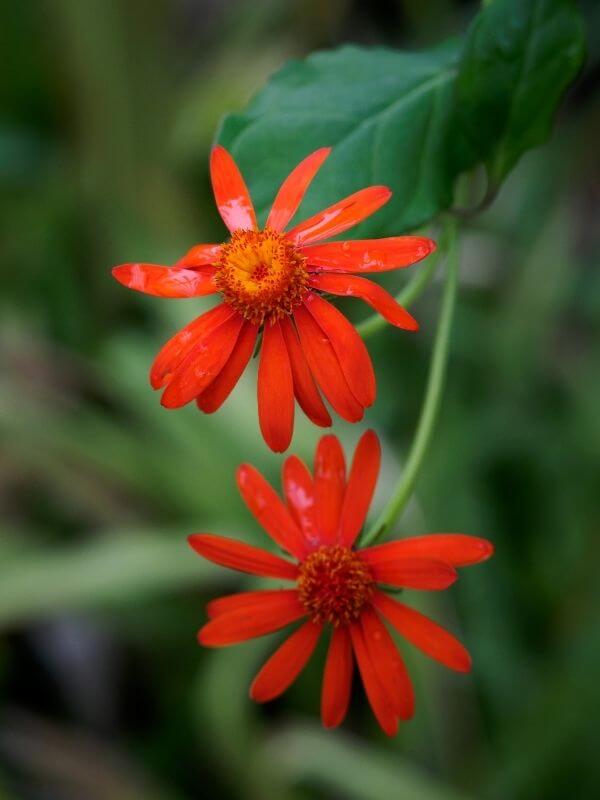
Did you expect a daisy like flower growing on a broad leafed vine? Yet there is one, Mexican flame vine, which is actually a real daisy, but a very strange one indeed.
It has the ray petals of the brightest orange imaginable and copper to golden disks which appear fluffy. The blooming season is very long, from late spring to fall.
But that’s where the similarity with most other daisies ends… In fact, it is not a small shrub or little plant, but a big evergreen vine with very large and fleshy heart shaped leaves.
This exotic looking daisy is excellent for pergolas, trellises and patios, even in dry regions.
14. Ice Plant (Delosperma Spp.)
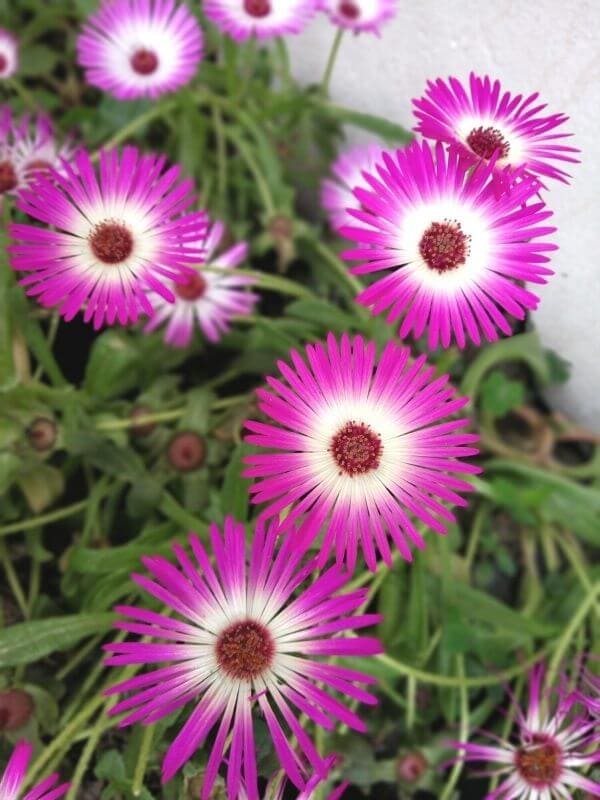
Here is a brightly colored daisy like succulent which technically is not a daisy (of the Asteraceae family). Ice plant has very showy flowers with many long petals that look shiny and waxy.
While the plants are very short, the many flowers are quite big, about 2 inches across (5 cm) and abundant. On top of this, the blooming season starts in late spring and ends in fall!
There are many varieties with colors ranging from snow white (‘Wheels of Wonder’) to bright red (‘Jewel of the Desert Garnet’).
Some are dichromatic, like ‘Jewel of the Desert Ruby’ (purplish ruby with white center); others have more romantic colors, like ‘Kelaindis’ (bright rose) and ‘Lavender Ice’ (light lavender).
15. Cornflower (Centaurea Cyanus)
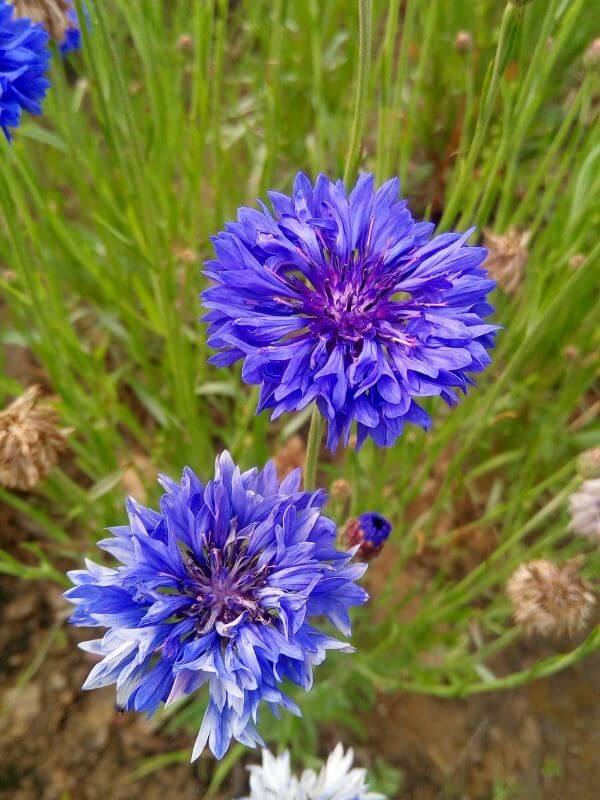
Did you know that cornflower is actually a daisy? Its rays may confuse you, because they are full small flowers with many pointed petals, instead of one and long, but it belongs to the Asteraceae family.
Famous for growing in cornfields, for its deep blue color, bachelor’s button (as some call it) is now a rare sight in the wild due to weed killers.
However, it has become popular in borders, hedges and wild meadows in gardens all over the world. There, it blooms from late spring to late fall, attracting loads of butterflies and pollinators.
16. Marigold (Calendula Officinalis)
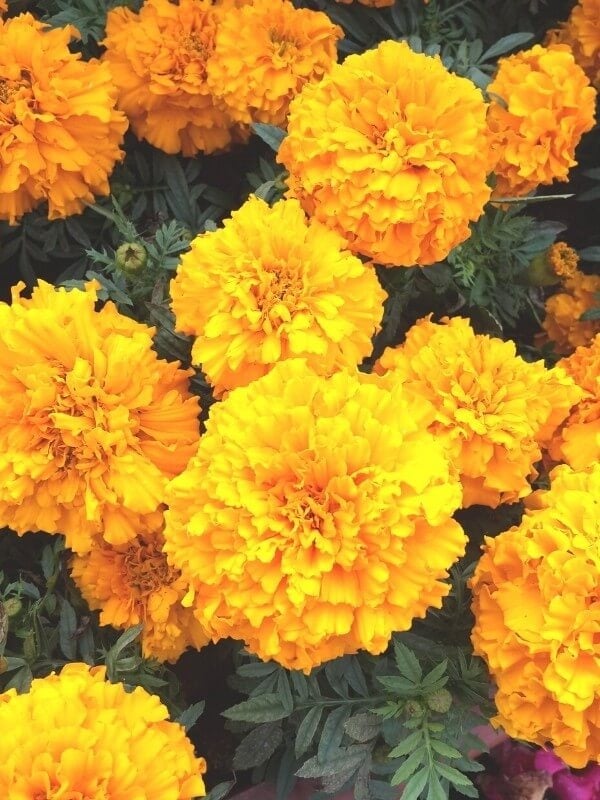
Pot marigold is a very common type of daisy that will grow well even in cold climates.
But maybe what has made it a favorite with gardeners is that it will bloom from late spring all the way till the first frost?
In fact, this beautiful and showy flower will provide your borders, containers, pots or beds with a very vibrant splash of bright yellow to bright orange.
There are quite a few varieties on the market, some single, some double, but single ones are better for their fragrance and to attract butterflies.
17. Aster (Aster Spp.)

We could not talk about daisy-like flowers without mentioning the flower that gives the name to the whole family: aster.
This very generous flowering perennial will fill borders, beds and containers with lots of beautiful flowers from summer to fall and attract lots of pollinators too.
It is an easy to grow plant, quite sturdy and hardy, which makes it ideal for temperate climates. It comes in many colors, though people mainly appreciate it for its purple to blue and pink range.
‘Purple Dome’ is possibly the one with the liveliest violet petals, while ‘September Ruby’ has the strongest purple ruby any flower can display.
But there are also delicate shades, like the pale purplish pink of ‘Audrey’ and the delicate lavender petals of ‘Treasure’.
18. African Daisies (Ostesospermum Spp.)
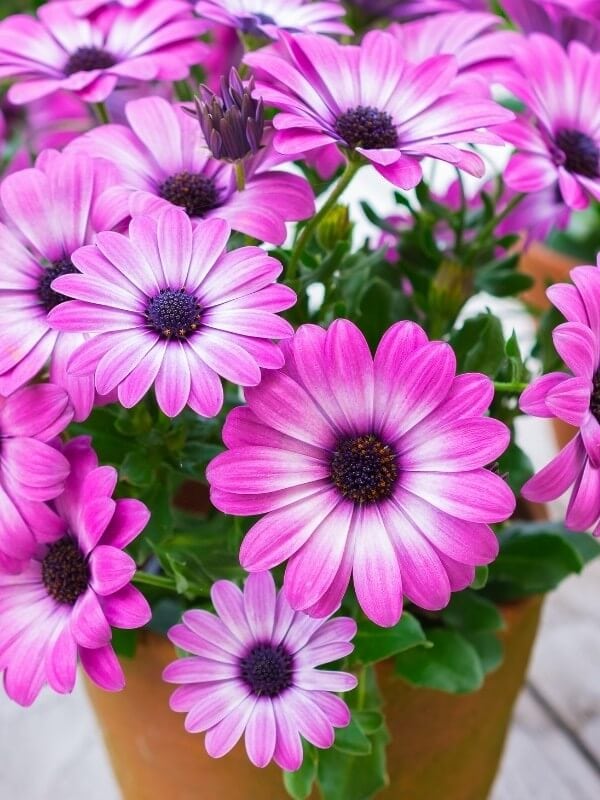
The iconic daisy shape of flowers adapted to a very exotic look gives us African daisies. They have long and brightly colored rays that bring to life and to your garden all the light of the African continent.
They also have bolder, more showy shapes, often with very well spaced ray petals. The disks, on the other hand, are smaller than other daisies, and often (not always) of a dark color.
With an amazing selection of hues it is hard to choose notable ones, but surely ‘Serenity Bronze’ with its bronze rays that turn magenta pink towards the dark disk is one.
‘Soprano White’ has waxy snow white petals that turn deep violet towards the disk, which is blue with a gold ring of anthers.
For romance on steroids, ‘Serenity Pink Magic’ has deep rose petals that turn white towards the center.
All African daisies have very sculptural petals with great texture and plasticity, and they look great in flower beds, borders, containers and on patios or terraces. Their blooms will last from spring to fall!
19. Gerbera Daisies (Gerbera Spp.)
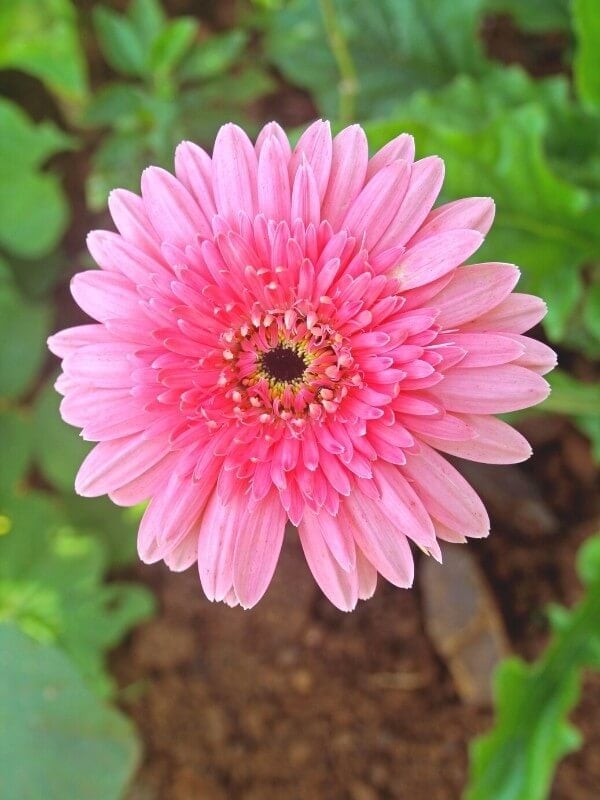
Gerbera daisies are popular in bouquets for their bright pastel colors, but also because they are large and showy.
In fact, these flower can reach an impressive 6 inches in diameter (15 cm), making them some of the largest daisies you can grow…
They are common as cut flowers, but they will look great also in beds, borders and containers and they are excellent for urban and courtyard gardens.
The palette of gerbera daisies ranges from white (Gerbera garvinea sylvana) to yellow and bright red.
Yet, maybe the range between coral (Gerbera jemesonii ‘Watermelon’) and pink (Gerbera jamesonii ‘Champagne’) offers some of the most interesting shades.
20. Coneflowers (Echinacea Spp.)
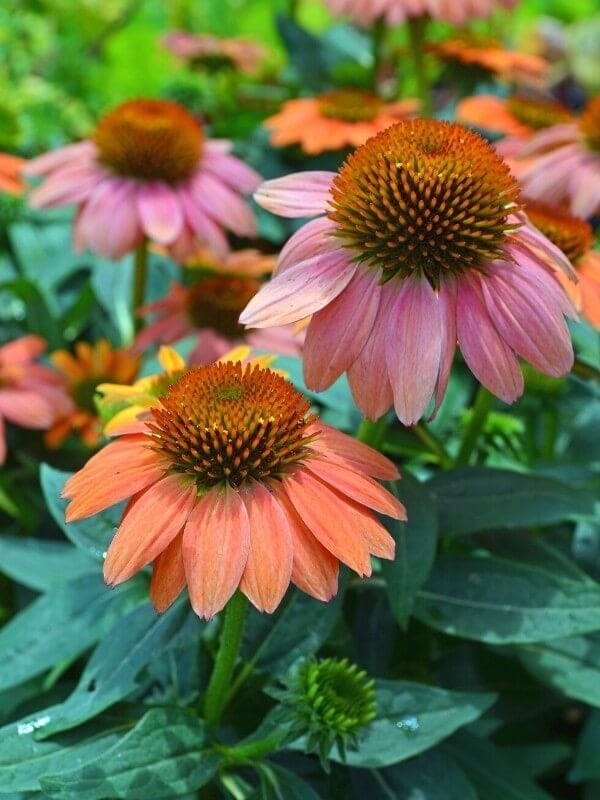
Coneflowers are becoming all the rage because of their great healing properties, but also thanks to their sultry looking colors.
They are actual daisies, but the disk, instead of being flat, is in the shape of a cone.
They are very generous bloomers and the range of shades goes from the most vibrant red in Nature (‘Firebird’) to bright lime yellow (‘Sunrise’) but many varieties play with the pink to magenta range, like the pale rose ‘Hope’ or the light purple Echinacea purpurea.
They look wonderful in cottage gardens and wild prairies, but they will look great in beds and borders too.
The Playful World of Daisies
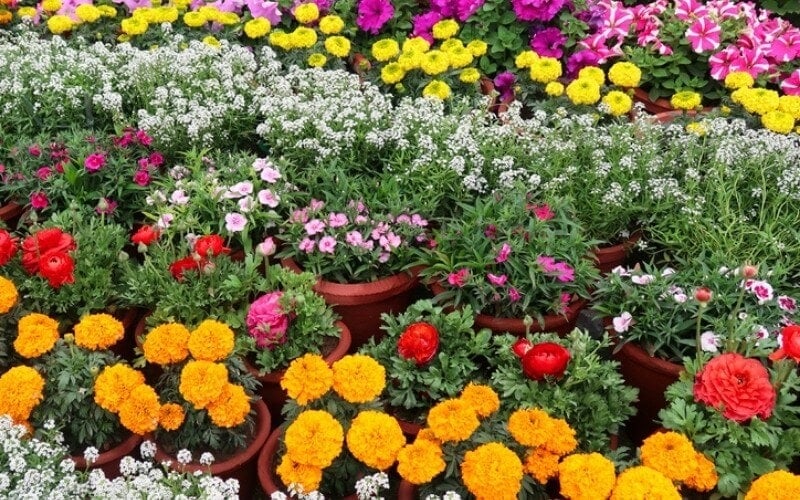
When we say, “Daisy”, most people think of small white flowers with a golden disk inside. These are beautiful too, but now you know that there are daisies of so many different types…
Some are even climbers, like Mexican flame vine, some are exotic, like African daisies, and some are romantic, like gerbera daisies.
But daisy like flowers extend even further including even succulents like ice plant.
What is sure though is that if you like this iconic flower shape, you will have all colors and variations to play with, and different types of plant too…
In fact, you could even grow a whole garden with daisy like flowers!

Written By
Adriano Bulla
After many years as an academic in London, Adriano Bulla became a writer, publishing books like A History of Gardening, Organic Gardening and Elements of Garden Design; he then decided to become a gardener, following his childhood dream, and has been following his dream writing and gardening professionally in Southern Europe, where he has specialized in new and innovative organic gardening fields and techniques, like permaculture, regenerative agriculture, food forests and hydroponics.

JUST BEAUTIFUL!!!!
thank you!